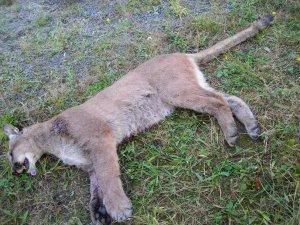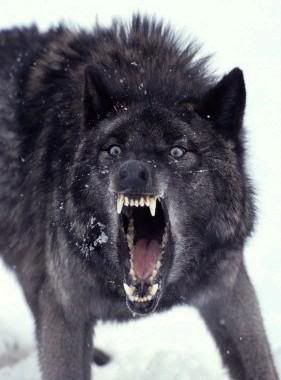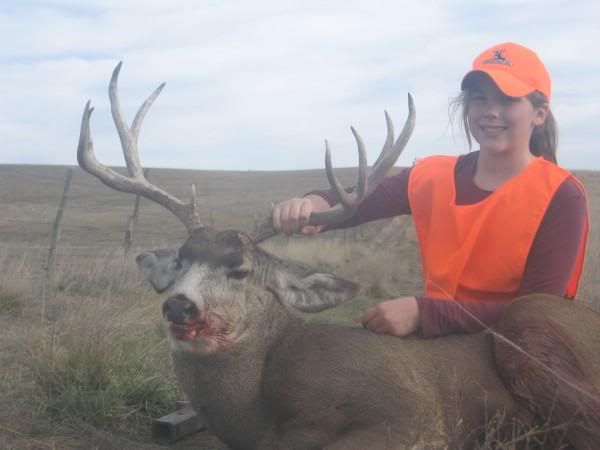He ain’t heavy just hurry and take the picture!

He ain’t heavy just hurry and take the picture!

What a beautiful buck in some awesome mountains


Some people in Nevada would prefer to hunt mule deer as opposed to feeding them to the lions
——————————
A Nevada bill, Assembly bill 241, was recently defeated. This bill would have required that at least 40 percent of the money in the Wildlife Heritage Trust Account be spent controlling mule deer predators. The mule deer is a favorite of some hunters, including Gov. Jim Gibbons, so they want to protect it so as to be able to kill it. Alas, the mule deer must fend for itself.
There seems to be no limit to the number of mule deer that can be killed by mountain lions, but what what happens when lions prey on bighorn sheep? My current estimate of the number of mule deer killed by mountain lions anually in Arizona is 170,000. What if an “offending mountain lion”, as referenced in the following article, were one that killed two mule deer within a six month period, as opposed to killing two big horn sheep?

———————————–
Arizona Game and Fish extends moratorium limiting mountain lion predation management on the Kofa National Wildlife Refuge
April 18, 2009
PHOENIX — As part of its continued efforts to restore the Kofa National Wildlife Refuge’s (NWR) struggling desert bighorn sheep herd, the Arizona Game and Fish Commission voted today, at its regularly scheduled meeting, to extend through July 31 the Department’s self-imposed moratorium on lethally removing offending lions captured and collared on the Refuge. As defined by the 2007 Kofa Mountains Predation Management Plan, an offending lion is one that kills at least two bighorn sheep within a 6-month period.The decision to extend the moratorium through the July 31 date reflects the U.S. Fish and Wildlife Service’s (Service) estimated timeline of the end of the public scoping period for the environmental assessment (EA) for managing mountain lion predation on desert bighorn sheep on the Refuge. The Service now anticipates completing the EA by the end of 2009.
The department’s original one-year moratorium was enacted in April 2008 as a cooperative agreement with the Service, and it expired yesterday, Friday, April 17. When established, the one-year moratorium reflected a Service estimate of six months to complete the EA. Lions captured and collared outside the Refuge are not subject to the moratorium.
The Service requested the department to extend the moratorium due to the complexity of conducting the environmental assessment.
The moratorium extension provides one exclusion.
In late February, the department collared a lion, KM04, on the refuge during the original moratorium. This lion, currently the only one captured and collared on the refuge, has already preyed upon three bighorn sheep and qualifies as an offending lion. Under the extended moratorium, the KM04 lion’s predation history will be reset to zero as of today’s decision. However, if KM04 qualifies as an offending lion again, he will not be covered under the new moratorium.
“The Kofa bighorn sheep herd is critically important to the sheep restoration efforts in Arizona and much of the Southwest,” said Gary Hovatter, deputy director for the department. “The very low rate of herd recruitment – approximately 40 yearlings per year – makes any additive mortality to this herd – be it due to drought, disease, forage quality, or other factors — an issue of critical interest to the department and its stakeholders – the citizens of Arizona.”
Hovatter added, “mountain lions are also an important species to the department and the eco-system. Their populations are very healthy throughout the state and are managed like all other big game species. Removal of lions on the Kofa NWR does not threaten the health of Arizona’s mountain lion population.”
The Kofa desert bighorn sheep herd was once one of the most robust herds in the nation and has been a critically important source of transplant sheep for restoring desert bighorn sheep to Arizona and other southwestern United States mountain ranges for 51 years. Historically the Refuge has been home to a population averaging 760 bighorns. However, since a survey in 2000, the population has continued to decline. The 2006 survey count reflected a historic low estimated population of 390 animals.
Wildlife experts attributed the decline to a variety of potential factors including drought, predation, wildlife water management, disease factors and human disturbance. At the beginning of restoration efforts in 2006, it was estimated that at least five lions had been spending enough time in the refuge portion of the Kofa Mountains Complex to be considered “resident.” Given the historical indications of the transient nature of the lion presence on the Kofa, these resident lions are likely an important cause of additive bighorn mortality.

It has been reported to me that two wolves were killing mountain goats in Northern Utah so the DWR flew in with a helicopter and killed the wolves. Shortly afterward, a man on horseback reported being followed by a large black wolf in the same area.


CASPER, Wyo. (AP) – State wildlife officials say the winter mortality rate for mule deer, pronghorn antelope and elk was below normal in most of the state.
The mild winter and the lack of major snow accumulation in lower-elevation wintering ranges produced good conditions for the state’s big game populations.
The Wyoming Game and Fish Department says herds are in particularly good shape in popular hunting areas. That includes the Casper region, south-central Wyoming and the huge deer herd of the Wyoming Range.
For fall hunting season, officials say they expect deer and antelope quotas to be similar to previous years with the possibility of slightly more licenses available for elk.
Is this a beautiful sight or what?

If she can do it, why can’t you?

If you want to apply for a Nevada Mule Deer hunt, don’t wait much longer. The deadline is April 20.
Click NEVADA ONLINE APPICATION go to the states page where you can access the online applications

APPLICATION DEADLINE EXTENDED TO APRIL 17 FOR BIG-GAME LICENSES, PERMITS SANTA FE
——————————–
The Department of Game and Fish has extended the deadline to apply for big-game licenses and permits to Friday, April 17, in response to delays caused by extreme pressure on the agency’s telephones and computer server.
Many customers who waited until the last few days before the original April 8 deadline were not able to connect by computer to obtain a new Customer Identification Number. The number is required this year for everyone applying for licenses and permits. The free numbers only can be obtained online or at a Department office in Santa Fe, Albuquerque, Raton, Roswell or Las Cruces. Two days before the original deadline the Department Web site recorded more than 1.6 million hits, almost three times the daily average.
Department office telephone lines also were deluged with calls about the Customer ID Number, forgotten passwords and other questions.
The Department is expecting to receive more than 150,000 applications for about 50,000 available licenses and permits for deer, elk, antelope, javelina, ibex, Barbary sheep and bighorn sheep.
Online applications must be received by 5 p.m. MDT April 17. Paper applications must be postmarked by April 17 or delivered to the Department office in Santa Fe by 5 p.m. MDT April 17.
Online applicants are encouraged to apply early to avoid missing the deadline because of forgotten passwords or other computer-related issues at the last minute. Late applications will not be accepted.
Applicants are reminded that everyone applying for a public-land license or permit, or purchasing a license via a private land authorization or the Valles Caldera must first obtain a free Customer ID Number online at www.wildlife.state.nm.us or in person from any Department office. This number must be included on each application, paper or online, or the application will be rejected.
All applicants who were licensed to hunt deer or elk, or to hunt or trap furbearers in the 2008-2009 seasons must have submitted a harvest report to be eligible for the upcoming drawing. Hunters and trappers who did not report by the deadlines — Feb. 15 for deer and elk hunters, April 7 for furbearer hunters and trappers — can still participate in the 2009-2010 drawings if they submit their harvest survey and pay an $8 late fee before applying. Hunters who fail to report their 2008-2009 harvest results — successful or not — will have their 2009-2010 applications rejected. Harvest reports can be submitted online at www.newmexico-hunt.com or by calling toll-free (888) 248-6866.
Results will be available in early June on the Department Web site or in person at any Department office